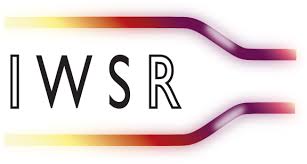- Unfiltered
Far from being a flaw, ‘cloudiness’ is beginning to denote not just flavour, but a more natural, less tampered with product. When a trailblazing Scottish craft brewer announced the launch of its inaugural spirits range, comprising of both a vodka and a gin, it was adamant the later was to be unfiltered. Why? Because this “means that all of the flavour and spirit complexity remains”, it said. Notably, the liquid even louches on contact with ice and water, as “removing flavour in the pursuit of vanity makes no sense”.
While clarity was once seen as a chief sign of quality, brewers are increasingly marketing beers as unfiltered, communicating to drinkers that the beer is rawer and more flavourful and authentic. And with all of those things being key consumer drivers, we expect an increasing number of players in the ‘unfiltered’ space, most notably when it comes to spirits.


- Moderation
With young people shunning alcohol in ever-growing numbers, the impact of a generation of moderate drinkers is having a distinct influence on the type of products being launched. It would be hard to ignore the impact of Diageo-backed non-alcoholic ‘spirit’ Seedlip since its 2015 launch. But one resulting trend we’ve recently witnessed is that for Shim cocktails, whereby higher-ABV spirits such as gin and vodka are switched out for lower-ABV alternatives such as sherry, port and vermouth. The sherry-and-tonic and port-and-tonic serves are widely tipped to increase in popularity, as fortified wines as a whole are being ‘discovered’ by a new, younger generation. With consumers increasingly unwilling to consume calories or alcohol for products they deem ‘not worth it’, we see an increasing need for premium players in this space.
- Sparkling
Consumers are becoming ever-more knowledgeable and curious as to what goes into the drinks they consume. There are signs that many are beginning to approach them in the same way they do food, seeking out calorie counts, ingredients and sourcing information. In this simplicity, nothing-added, low-sugar driven market, one of the areas that drinks makers can explore, without compromising on any of these concerns, is texture.
Sparkling therefore – with its premium connotations – is ripe to become a greater area of exploration. From sparkling gins to bartenders adding carbonation to cocktails, we predict that adding fizz to traditionally flat drinks will become a greater area of exploration.
- Cannabis
Though the full legalisation of marijuana is a long way from being achieved, there’s no doubt that it is already shaping the drinks world. Though cannabis-flavoured and infused products are nothing new, Constellation’s recent investment in Canadian medical marijuana company Canopy Growth, is the surest sign yet that the trend is about to go mainstream. This puts the drinks giant in a good position should national legalisation in the US occur – something that seems increasingly likely. (Currently states such as Colorado, Nevada and California have legalised the drug, other states look likely to follow in 2018.)
- Colour
From the ‘unicorn’ trend to the rise of colour-changing gins, 2017 has been dominated by the colour of the food and drink we consume, and the environments we drink it in. Why? The simplest and most obvious answer is social media. With most people permanently carrying a high-quality camera, and Instagram growing in both reach and influence, we’ve arguably never lived in a more visual culture.
But colour can be both frivolous and significant and it’s considered use looks set to dominate the year ahead. If 2017 has proved anything, it’s that colour has both power and social currency. The exact shade isn’t crucial; what is, is an understanding by brands that colour is both an easy shortcut when it comes to reaching a desired consumer base, but that it will become ever-more central to ultimate success.
- Waste
Though there have been attempts by the drinks industry to be more environmentally aware in recent years – usually through a focus on packaging – the pressure to cut back on waste is growing.
It would be an overstatement to say that waste has dominated the drinks landscape of late, but it’s increasingly informing the conversations we have. And there’s perhaps no market force that has the potential to alter both what we consume and how we consume it as drastically.
With news headlines now frequently highlighting issues such as the plastics in our oceans and the predicted global food shortage, pressure from consumers to be more environmentally aware will only grow. It’s up to drinks makers to find innovative new solutions.
About Radius
Radius is the IWSR’s Product Innovation Tracker. A searchable database of the latest product launches, trends and innovations for wines, spirits, beer and cider, plus features and interviews. Subscribers can receive tailored email alerts of breaking trends and product launches and create personalised downloadable reports. Over the past six years Radius has built a strong reputation for intuitive, qualitative trend research focused on the drinks industry. Radius is an IWSR publication, produced and created by beverage innovation consultancy Vandal Ltd. For more information, contact graziella@theiwsr.com www.IWSR-Radius.com
About the IWSR
The IWSR is the leading source of data and analysis on the alcoholic beverage market. The IWSR’s database, essential to the industry, quantifies the global market of wine, spirits, beer and mixed drinks by volume and value, and provides insight into short- and long-term trends. Our data is used by the leading players in the beverage alcohol market. The IWSR’s unique methodology allows us to get closer to what is actually consumed and better understand how markets work. The IWSR conducts face-to-face interviews with over 1,500 companies in 118 countries each year, with further input from 350 companies. The IWSR tracks overall consumption and trends at brand, quality and category level.
